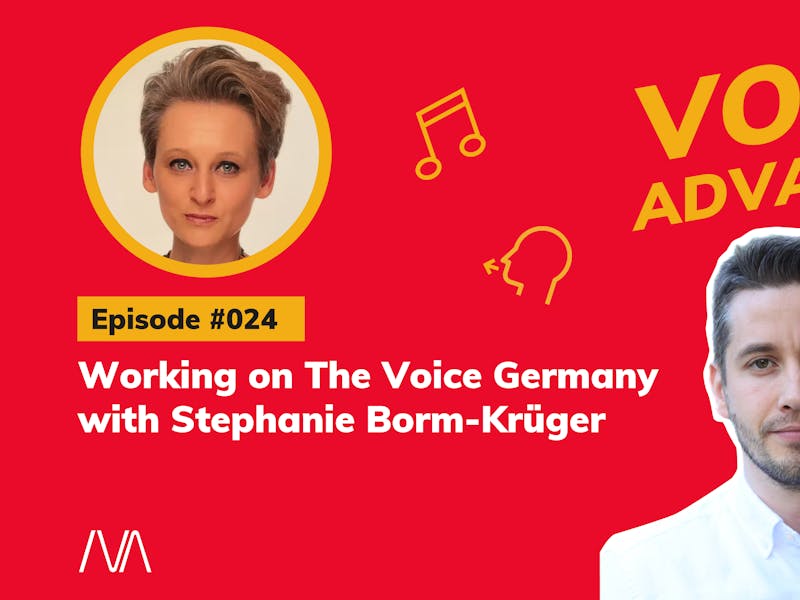We are delighted to announce that after 5 years, IVACON is back in person! Our exclusive week-long conference is tailored for singing teachers just like you.…
The IVA Teacher Certification Program is arguably the most comprehensive training program for singing teachers in the world. It has helped many around the globe take their teaching to the next level.
In order to help teachers develop the high-quality skills that the IVA Method is known for, our certification program requires a certain amount of dedication that not everyone may be willing to give.
Still, the principles that the IVA Method is built upon are so important for everyone who deals with the subject of singing that as a voice teacher or aspiring voice teacher, you at least want to have a basic knowledge of them.
That is why now, for the first time, you can learn the basics of teaching the IVA Method in our 8-hour introductory course. This course is available online in the form of live webinars, in-person (in selected locations around the world), and as an extended intensive training course at our yearly conference called IVACON.
Who this course is for
This introductory course is ideal for choir directors, new voice teachers, speech language pathologists, or anyone else who wants to learn about the basics of teaching voice in a successful way.
It’s also great for classical voice teachers who want to learn how to teach contemporary singing.
And it’s the right choice if you are not sure yet whether you want to focus on teaching voice or have already acquired other vocal education but want to take a look at teaching the IVA Method.
What to expect
The introductory course gives you an overview of the most important aspects of the IVA Method and of being a singing teacher. Here are some of the most important things you will learn:
- how the voice works and the role that good vocal technique plays
- what role perception plays in singing
- what "vocal passages" are
- what the tools of the trade are that can enable you to develop voices
- how to apply vocal technique successfully to songs
- how to create a basic structure for a voice lesson
- the basics of vocal science and vocal health (only in extended version)
- the basics of starting your own vocal studio (only in extended version)
- and much more . . .
Outline: Introductory Course to Teaching the IVA Method
Lesson 1: The basics of good vocal instruction
You will learn about the basic anatomy and physiology of the singer’s instrument and how all of it works together in order to produce what you know as your voice. This will lay the foundation for you to understand what exactly Vocal Balance is and why it is so important in building great singing voices. We will introduce you to the Core Values of the IVA Method that show you how to build a solid basis for effective and successful vocal instruction.
Lesson 2: Looking through the singer’s eyes
The world of vocal pedagogy, with all its opinions and terminology, can be a confusing place for a singer. One of the most important skills you need as a voice teacher is to be able to guide your students through the experience of learning to sing, laying out a clear path in front of them that not only make sense to them, but also becomes self-explanatory. This is why you will learn about how perception can guide the singer’s way toward improving vocal skills and how perception is related to today’s singing terminology. This will allow you to understand the possible starting points for developing the voice. You will also learn about the fundamentally important concept of Vocal Passages. They can be a singer’s best friend—or worst nightmare. If applied correctly, it can form the ideal basis for developing the voice. If not handled with care, it can greatly limit the abilities of your voice. We’ll show you how and why this concept works and how it is related to actual vocal registers.
Lesson 3: Learning to apply the tools of the trade
The best vocal knowledge doesn’t bear fruit if you don’t know how to apply it to the student’s voice. You need to know how to get your students to vocally do what you want them to do. And that is what this lesson is about. You will get to know the basic tools we use in the IVA Method and the rules for how you should use those tools in order to get the desired functional results. We’ll also introduce you to proven strategies for every lesson you teach, as well as for the long-term development of your students. From meeting new students for the first time, assessing their voices and delivering the lesson, to them practicing at home and coming back for subsequent lessons, this knowledge sets you up for success.
Lesson 4: Making the magic happen: songs and genre typic sounds
Exercises are important to develop the voice, but what it all ultimately comes down to is applying what you have learned to songs. Nobody will come to you just to learn vocalises. Your students want to sing and sound great while they do it; that’s what drives them to take lessons. We will show you how Vocal Balance can serve as a basis for singing songs in any genre of music and how it allows you to give your students more stylistic choices instead of forcing them into a tight technical brace without any creative freedom. We will lift the mysteries around different genre typic sounds in your students’ voices (e.g. singing Rock, Jazz, Classical, R&B, etc) and also walk you through how to use repertoire as a tool for building your students’ voices.
You also don’t need to worry about this course being nothing but a lecture. We are all about practical application. We believe that teaching singing is an applied science, so all theoretical principles explained throughout the course will be followed by p examples. The course instructors will use demo students for this purpose.
All introductory courses are taught by a hand-picked group of voice teachers called the IVA Ambassadors. They are highly qualified singing teachers with many years of experience in their jobs.
Can I join the IVA Teacher Certification Program after the introductory course?
Yes, of course that’s possible. In fact, if you are really serious about teaching voice, signing up for the certification program is definitely the next step you want to take. You also don’t need to worry about overlapping material between the introductory and certification courses; the content of the introductory course covers less than 10% of what you would learn as a Student Teacher in the first year of the IVA Teacher Certification Program.
We also have a special bonus for you if you have completed the introductory course to teaching the IVA Method and are then accepted into the IVA Teacher Certification Program: The introductory course will be credited as an elective course toward your education requirements as a Student Teacher.
If you were not able to pass the criteria for acceptance into the IVA Teacher Certification Program, taking the introductory course can serve as great preparation while you work on achieving the skills you need for the IVA Teacher Certification Program.
Related Articles
Singing Teachers Summit
A free, online summit for music educators
As a worldwide leader in vocal education, we're excited to host a Singing Teachers Summit on January 20th and 21st, 2024. This free, online event features a fantastic lineup of guest lecturers to offer insight on a wide range of…
Stepping Out of Your Comfort Zone with Stephanie Borm-Krüger How Performing Under Pressure Helps Unlock Your Creativity Do any of your students dream of performing on a TV show like The Voice or one of the Idols singing competitions? Then they’ll want to…








